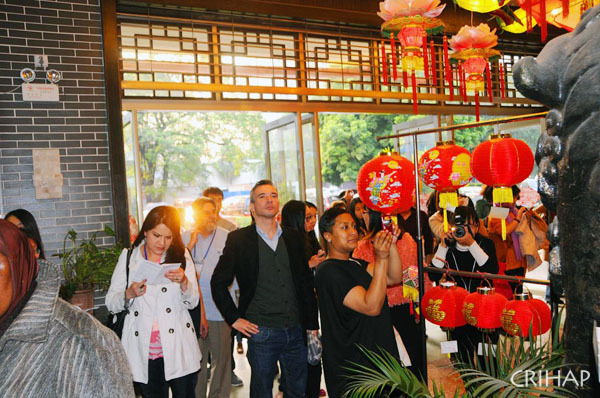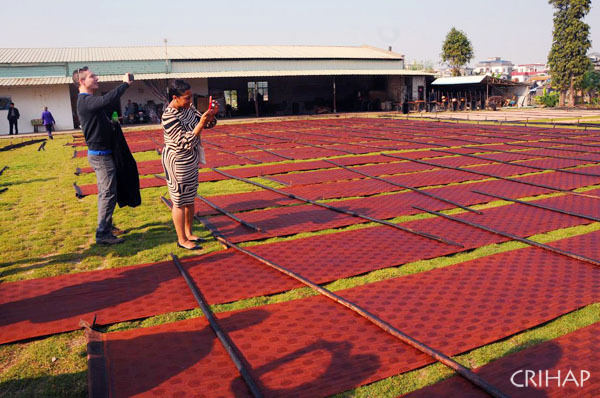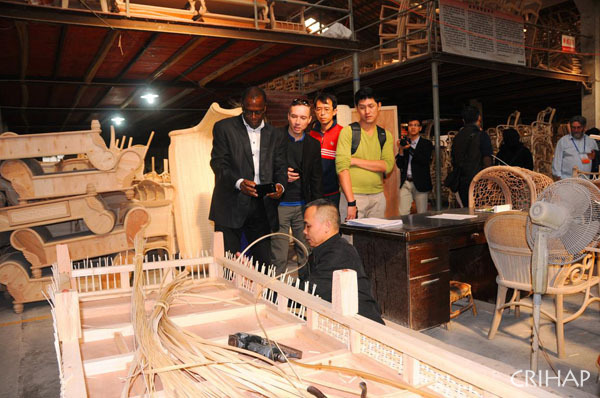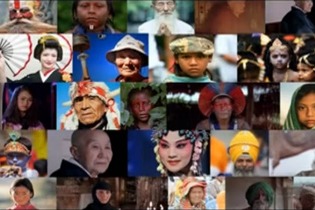Workshop on “Happy Chinese New Year and Safeguarding and Promoting Traditional Festivals”
★ Foshan colorful lantern

Foshan colorful lanterns are all made by hand. The lanterns come in hundreds of decorative patterns, mainly symbols of happiness and harvest, and come from folk stories. It was selected within the extension of the first batch of national intangible cultural heritage in 2008.
★ Xiangyun gauze

Representatives see where Xiangyun gauze is made
Xiangyun gauze is first dyed with juices from plants, and then covered by pond silt for further chemical changes. The production of Xiangyun gauze involves over 10 steps, all hand finished by artisans, which can take two weeks. Its front is black, while the back is lighter in color. It is sweat-and crinkle-proof, and easy to wash. It was selected in the second batch of national intangible cultural heritage in 2008.
★ Wing Chun (Kungfu)
Wing Chun is said to have originated in the middle Qing Dynasty. It focuses on attacks and defenses within short distance and in a short time frame. With fast fists, tight defense, and flexible footwork, it achieves a balance between offense and defense, hardness and flexibility. Today, there are millions of Wing Chun followers scattered among 4,000 Wing Chun schools in over 60 countries and regions all over the world. It was selected in the fourth batch of intangible cultural heritage from Guangdong province in 2012.
★ Choy Li Fut (Kungfu)
Choy Li Fut has a history of over 150 years. It lays emphasis on actual fighting, with spears, broad swords, and cudgels as the major weapons. It was selected in the fourth batch of intangible cultural heritage of Guangdong province in 2012.
★ Rattan plaited articles

Representatives watch Rattan plaited articles
Rattan plaited articles are made from vines. During the Tang Dynasty, it was a form of royal tribute. It was selected in the fourth batch of intangible cultural heritage of Guangdong province in 2012.
★ Guangdong embroidery
Guangdong embroidery originated in the Qin (221-207BC) and Han Dynasties (202BC-220AD). It has seven categories, featuring dozens of exquisite needle techniques, various patterns and vivid colors. It was selected in the first batch of national intangible cultural heritage in 2006.

Address: 81, Laiguangying West Road, Chaoyang District, Beijing, China
Zip Code: 100021
Tel: 86-10-64966526
Fax: 86-10-64969281
E-mail: crihap@crihap.cn
Leave us your e-mail address, we'll let you know about current events.



